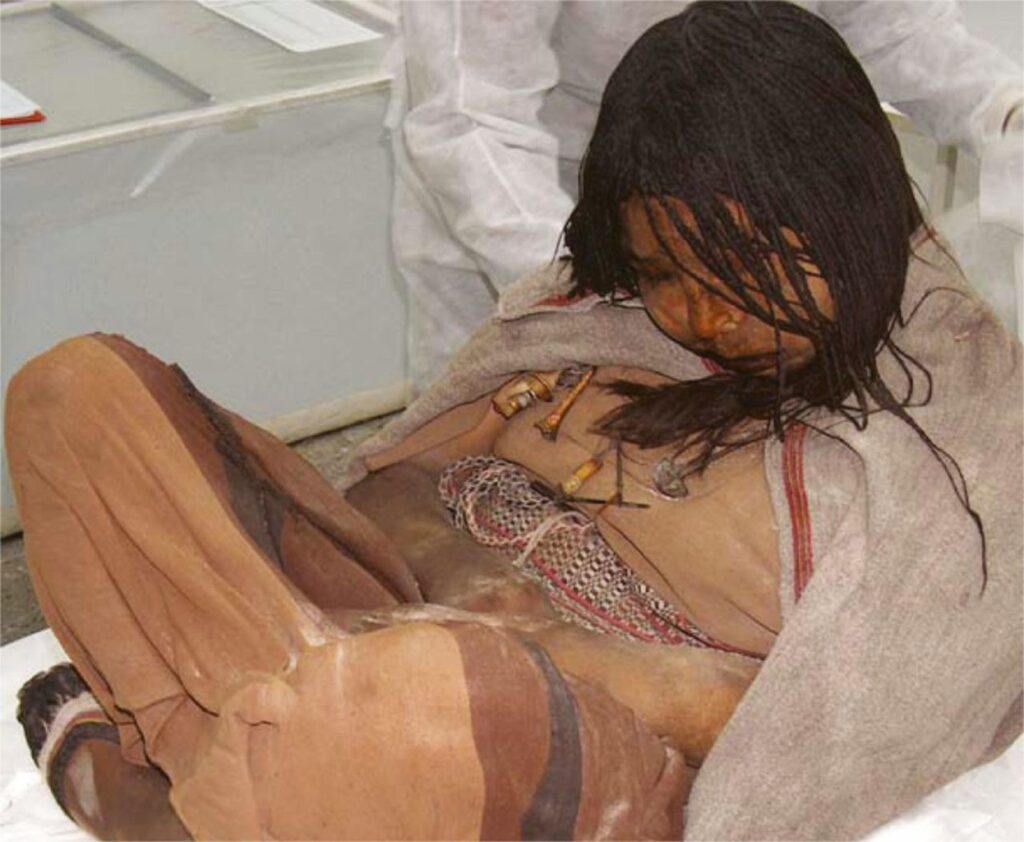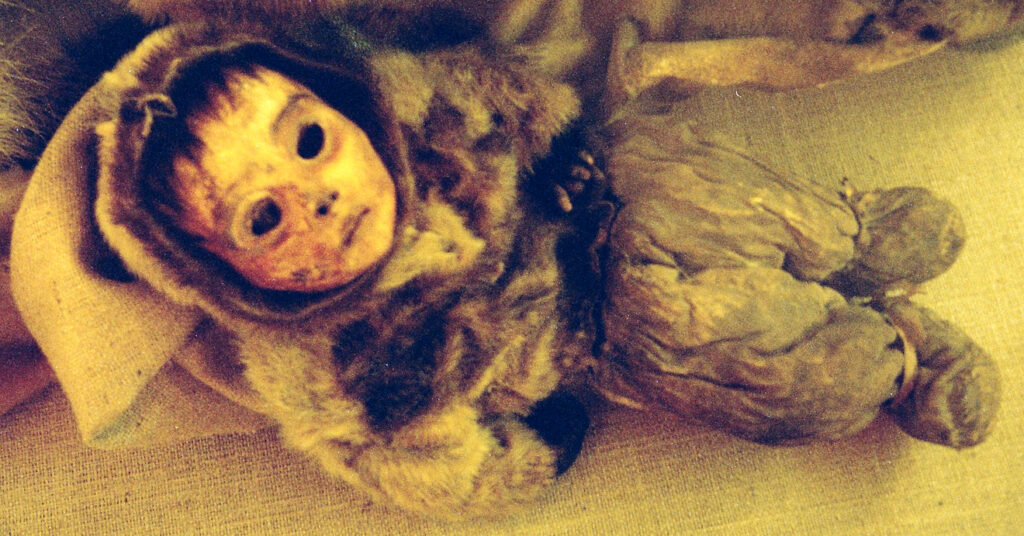Frozen finds are also known from outside glacier and ice patches. Cold and dry places, and permafrost are common contexts for such finds.
Inca child sacrifies in the high Andes
A number of child mummies have been discovered on mountaintops in the Andes. They are be human sacrifices from Inca times, connected to the so-called Capacocha ceremony. Humans and gifts were sent to Cuzco and then onwards to sacred places within the Inca realm. Some of these places were mountaintops.

A thirteen year old Inca girl, found 1999 at an height of 6700 m, on top of the Lullaillaco Volcano, together with two smaller children. Photo: Wikimedia Commons.
A scientific paper on the three children from the Llullaillaco volcano can be read here. A good popular book on the subject is Johan Reinhard 2006: The Ice Maiden: Inca Mummies, Mountain Gods, and Sacred Sites in the Andes. National Geographic.

500 years old mummy of a small child found in a cave in Qilakitsoq in Greenland. Photo: Wikimedia Commons.
Greenland mummies
Other frozen finds of mummies were discovered in a remote area called Qilakitsoq, Greenland in 1972. A total of eight natural mummies were found in two separate graves protected by an overhanging rock. The natural mummification was produced by freezing temperatures and dry, dehydrating winds. The mummies are of six women and two small children. They have been dated to around 500 years ago. The Qilakitsoq mummies are the oldest known finds of mummies and clothing in the Arctic. Most of the clothing preserved with the mummies is made of seal skin. Just as was the case with Ötzi, five of the women have tattoos, in this case facial tattoos.
Even though these mummies have been well studied, the question of cause of death is still unanswered. It is not common for the inuit to bury women and children away from the men. It was originally believed that they all drowned in a umiaq accident (which is a boat type for women), but there is no evidence to support this. Other possibilities are hypothermia, food poisoning or disease. There is no evidence of malnourishment.
You can read more about the Greenland mummies in: Hansen, Meldgaard and Nordqvist 1991: The Greenland Mummies. McGill-Queen’s University press.
Kurgan burials in the Altai
In the Altai Mountains of Russia and Mongolia there are a number of incredibly well-preserved burials of the Pazyryk culture. The people of the Pazyryk culture were horse-riding nomads, and some gained wealth through trade. The Pazyryk burials consist of wooden chambers covered by large cairns of stone. They are generally dated to the 4th and 3th centuries BC. The cairns covering the burials have produced a cooling effect, leading to the development of permafrost below, and saving the organic artefacts from degradation. The wide array of finds contain Chinese silk, wooden furniture and horses. The skin of the mummies show elaborate tattoos.
A good presentation of these burials can be found here: http://whc.unesco.org/uploads/news/documents/news-433-1.pdf
